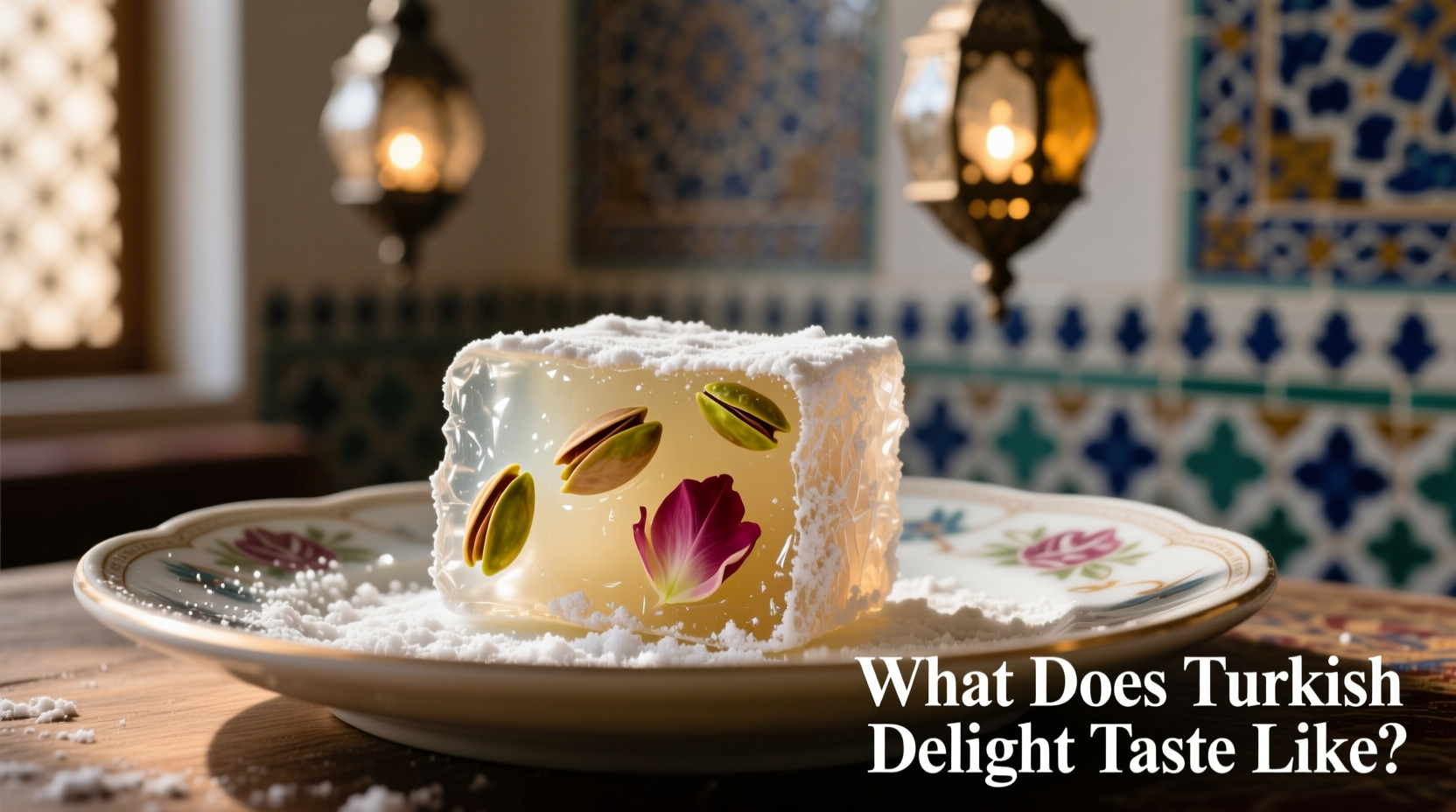Ever wondered what makes Turkish delight so special beyond its legendary appearance in Chronicles of Narnia? This centuries-old confection offers a sensory experience that’s both familiar and exotic to first-time tasters. Forget everything you expect from typical gummy candies—Turkish delight delivers a sophisticated flavor journey that has delighted palates across continents since the Ottoman Empire.
The Essential Flavor Profile Breakdown
When you take your first bite of authentic Turkish delight (lokum in Turkish), you’ll immediately notice three distinctive elements working in harmony:
- Aromatic subtlety – Unlike artificially flavored candies, traditional varieties use natural extracts that provide nuanced flavor rather than intense sweetness
- Textural contrast – A soft, slightly springy chew with a delicate melt-in-your-mouth quality
- Flavor evolution – The taste develops as you chew, starting with a gentle sweetness that reveals complex floral or citrus notes
"Turkish delight represents the pinnacle of Ottoman confectionery artistry,” explains Dr. Aylin Aktoprak, food historian at Istanbul University. “Its restrained sweetness reflects centuries of refinement where flavor balance was valued over sugar intensity.”
Flavor Varieties Compared: What to Expect
| Traditional Flavor | Taste Profile | Western Comparison | Authenticity Indicator |
|---|---|---|---|
| Rosewater | Floral, slightly perfumed, delicate sweetness | Much subtler than rose-flavored candies | Uses natural rose extract, not artificial flavoring |
| Lemon | Bright citrus with gentle tartness | Less acidic than lemon drops | Uses real lemon zest, not just citric acid |
| Mint | Cooling sensation without medicinal taste | More herbal than candy cane mint | Natural mint extract, not peppermint oil |
| Pistachio | Nutty richness with subtle sweetness | More complex than nut-flavored chocolates | Contains real crushed pistachios throughout |
Why It Doesn’t Taste Like You Might Expect
Many people anticipate Turkish delight will resemble gummy bears or jelly candies, but the experience is distinctly different. The texture—soft yet substantial—creates a different mouthfeel that allows the flavors to develop gradually. While Western candies often deliver an immediate sugar rush, authentic lokum provides a more sophisticated tasting experience where the flavor unfolds in stages.
Modern commercial versions found in supermarkets often miss the mark, using artificial flavors and excessive sugar that create a cloying sweetness. True Turkish delight maintains a delicate balance where the sugar serves as a canvas for the nuanced flavors rather than dominating the experience.
The Historical Evolution of Turkish Delight Flavors
Understanding how Turkish delight tastes requires appreciating its centuries-long evolution:
- 1400s-1700s: Early versions featured honey-based sweetness with regional fruits and nuts
- 1777: Haci Bekir establishes Istanbul’s famous confectionery, introducing starch-based preparation that created the signature texture
- 1800s: Rosewater and mastic gum become signature flavors as trade routes expand
- Early 1900s: Commercial production leads to simplified recipes with artificial flavors
- Present: Renewed interest in artisanal preparations reviving traditional methods
This historical context explains why authentic Turkish delight tastes more complex than mass-produced versions—the traditional preparation methods allow natural flavors to shine through without artificial enhancement.
What Affects the Taste Experience
Several factors determine how Turkish delight will taste to you:
- Quality of ingredients: Artisanal versions use real fruit extracts and floral waters rather than artificial flavors
- Freshness: Traditional lokum has a relatively short shelf life (2-3 weeks) compared to commercial versions
- Serving temperature: Best enjoyed at room temperature to allow flavors to express fully
- Accompaniments: Often served with Turkish coffee which enhances the flavor experience
Food scientists at the University of Ankara have documented how the unique starch-sugar ratio in traditional recipes creates a “flavor delivery system” that releases taste compounds gradually, unlike Western candies that deliver immediate sweetness.

How to Properly Taste Turkish Delight
For the authentic experience, follow these steps:
- Allow the pieces to come to room temperature (refrigeration dulls the flavors)
- Start with a small piece—the flavors are concentrated
- Notice the initial texture: it should yield gently without sticking to your teeth
- Let it rest on your tongue for a moment before chewing to experience the flavor development
- Pair with unsweetened Turkish coffee to cleanse the palate between varieties
"The magic of Turkish delight lies in its restraint,” notes culinary historian Sarah Johnson. “Where modern candies bombard your senses, lokum invites you to savor—each piece tells a story of Ottoman innovation and the ancient spice routes that brought these flavors together.”
Finding Authentic Turkish Delight
When seeking the genuine taste experience, look for these indicators of quality:
- Ingredients list featuring natural flavorings rather than “artificial flavors”
- Short shelf life (authentic versions don’t contain preservatives)
- Texture that’s soft but holds its shape
- Subtle coloring rather than bright, unnatural hues
- Distinct layers of flavor rather than one-dimensional sweetness
Specialty Middle Eastern markets and artisanal confectioners typically offer the most authentic versions, while mass-market varieties often sacrifice complexity for longer shelf life and broader appeal.











 浙公网安备
33010002000092号
浙公网安备
33010002000092号 浙B2-20120091-4
浙B2-20120091-4